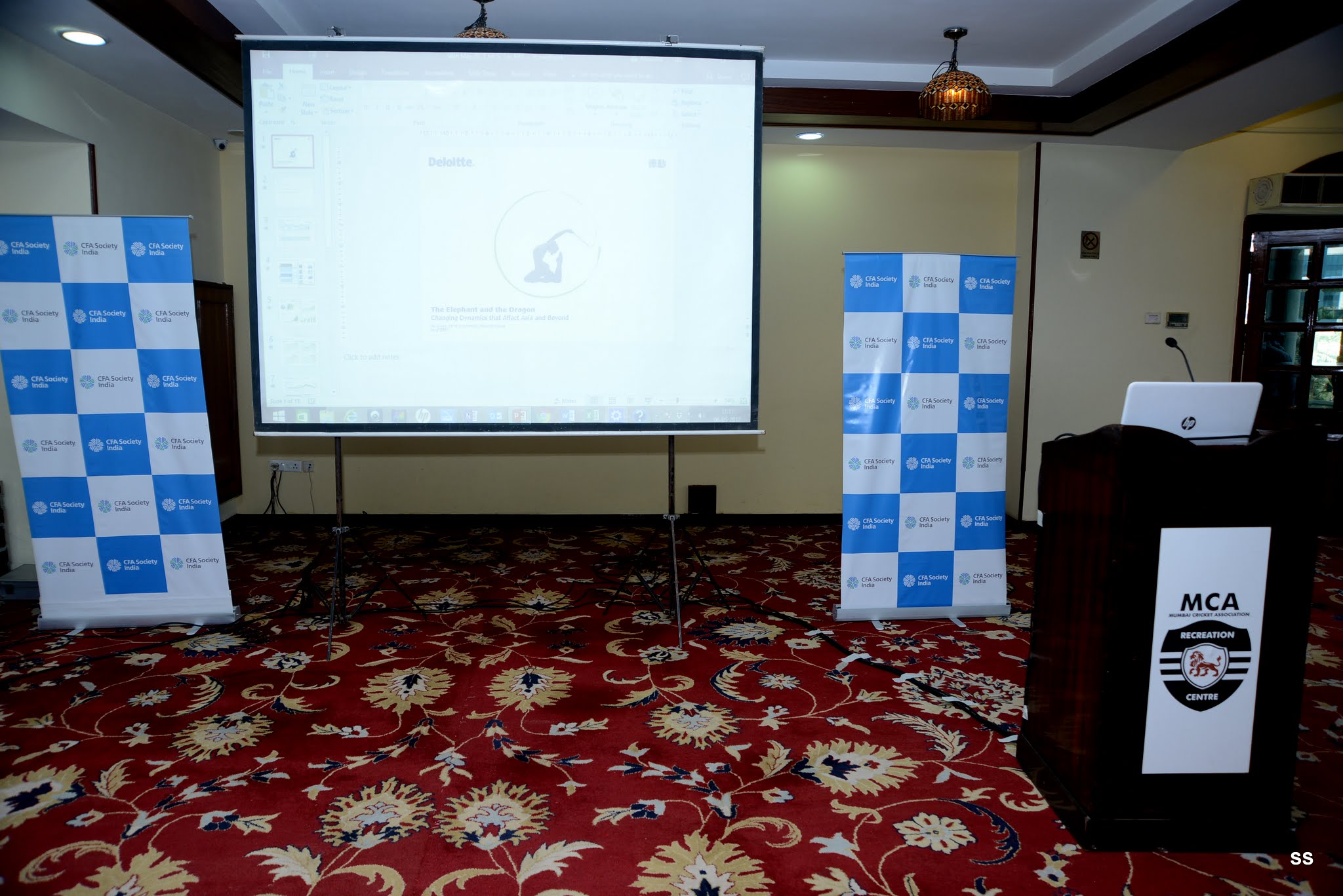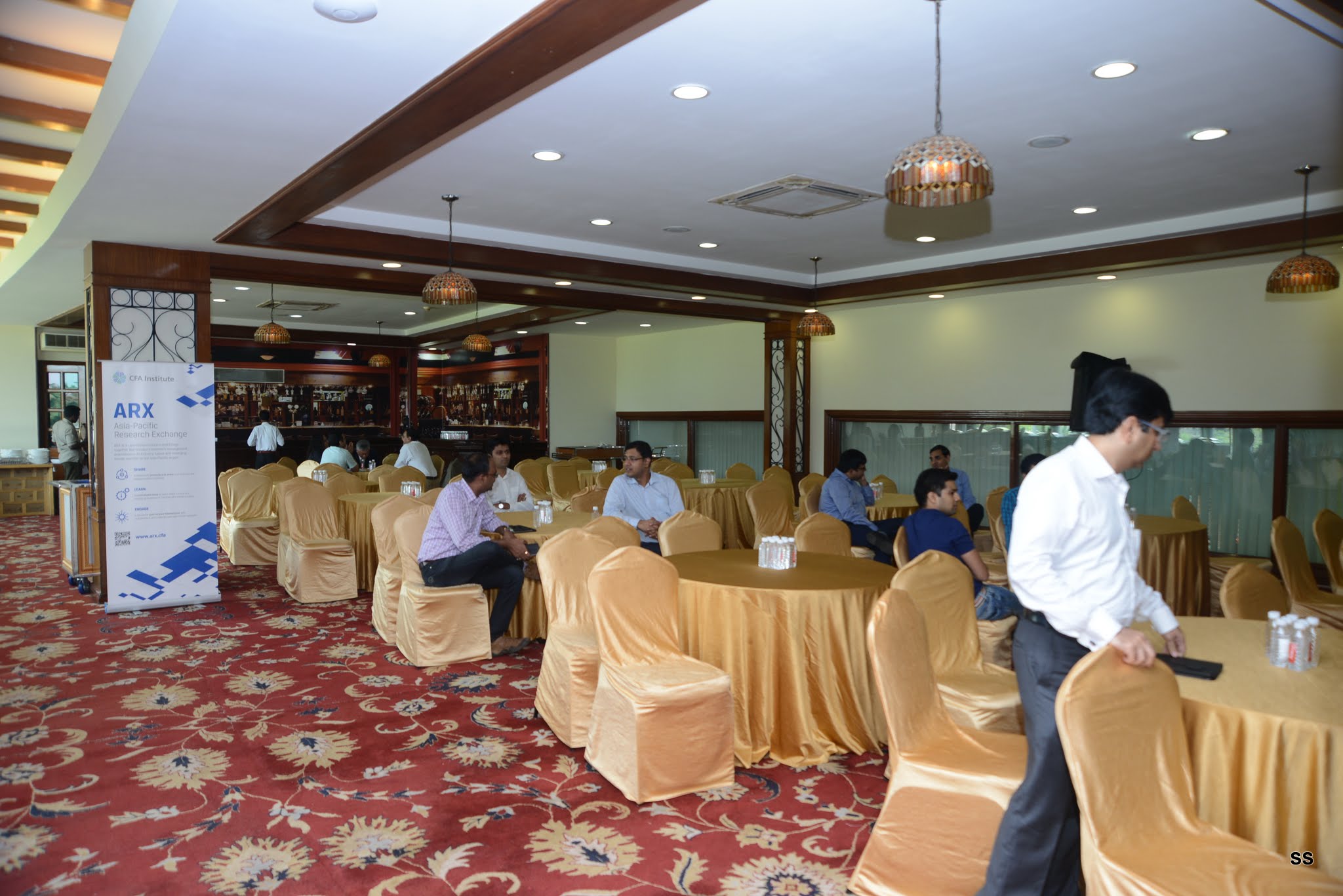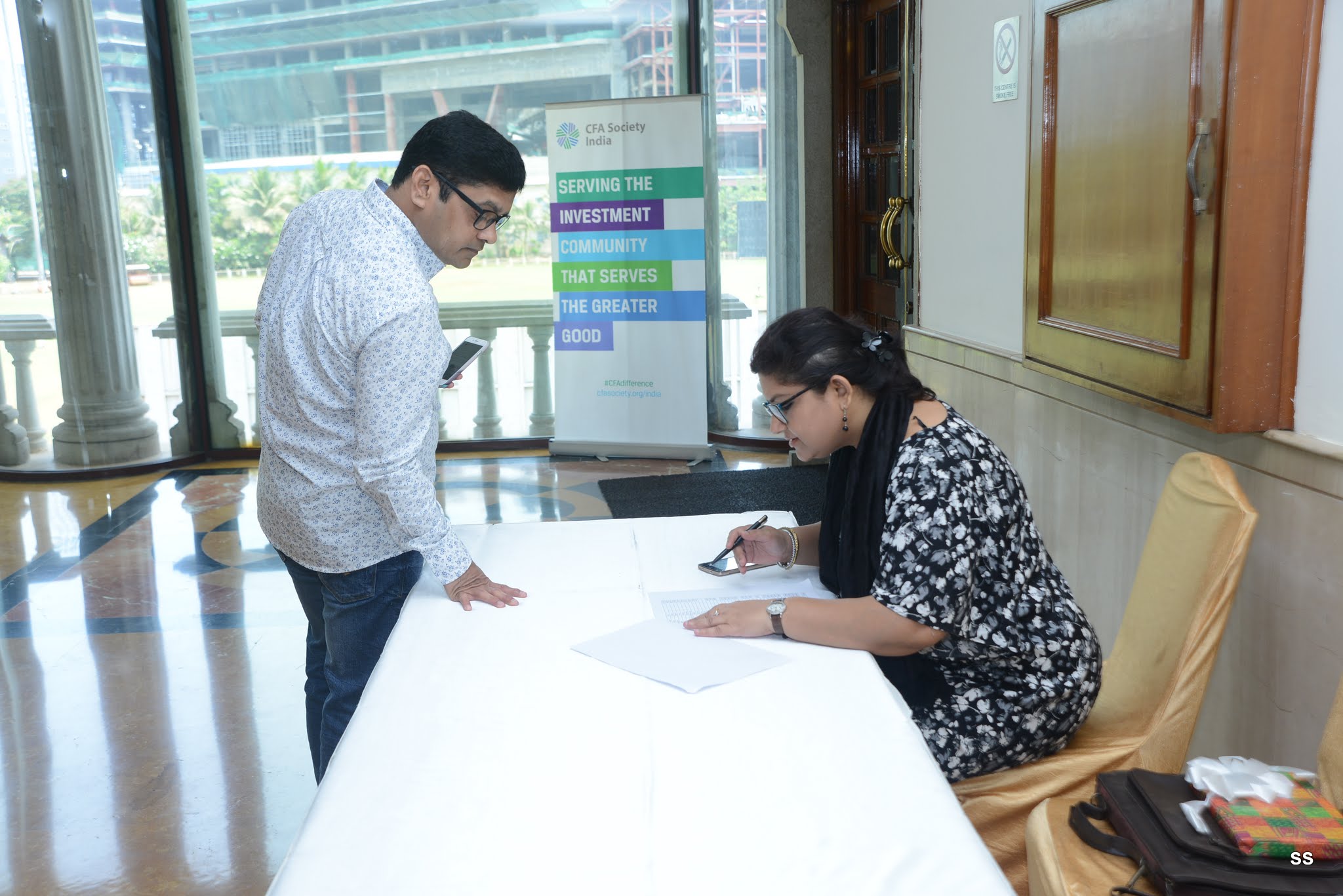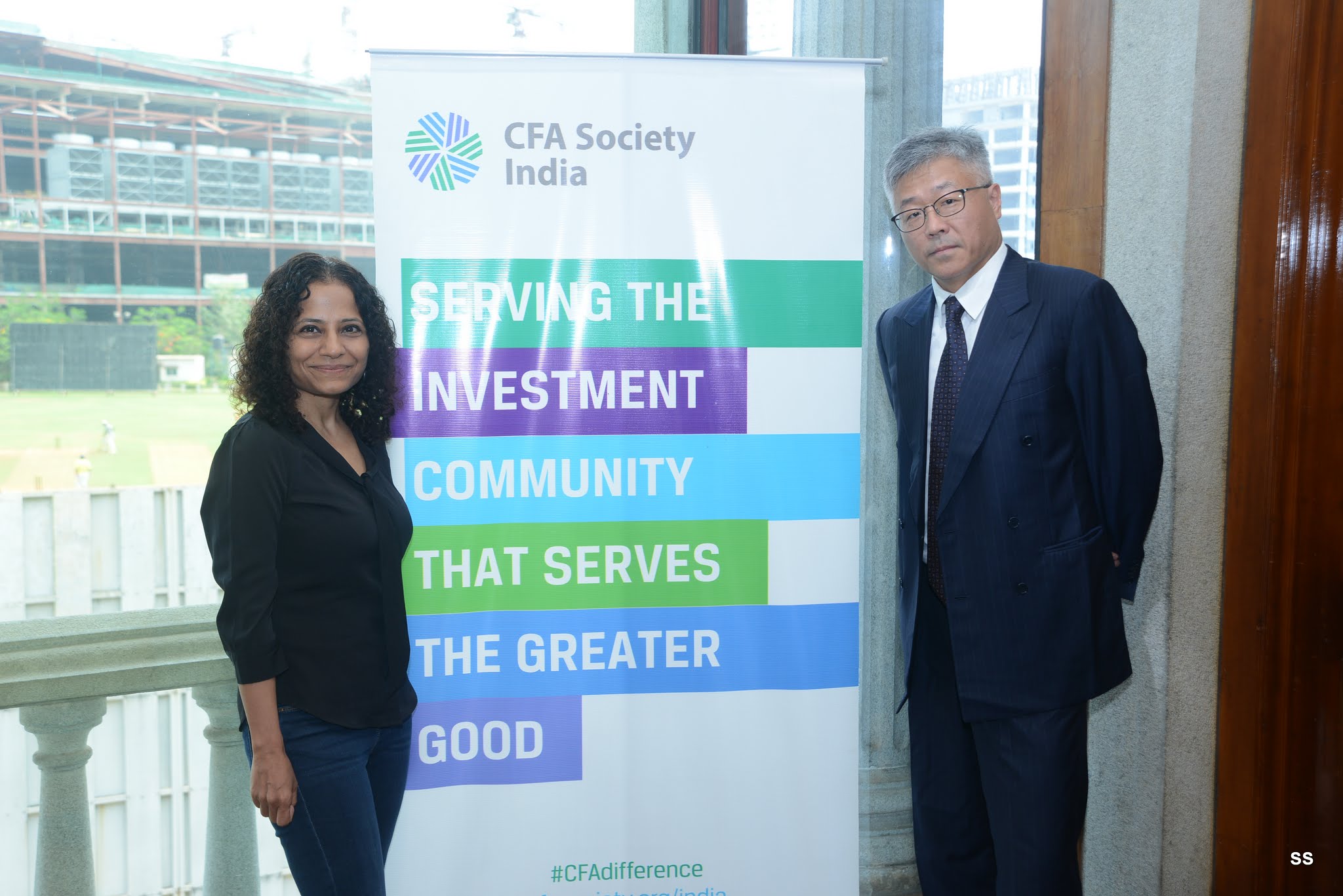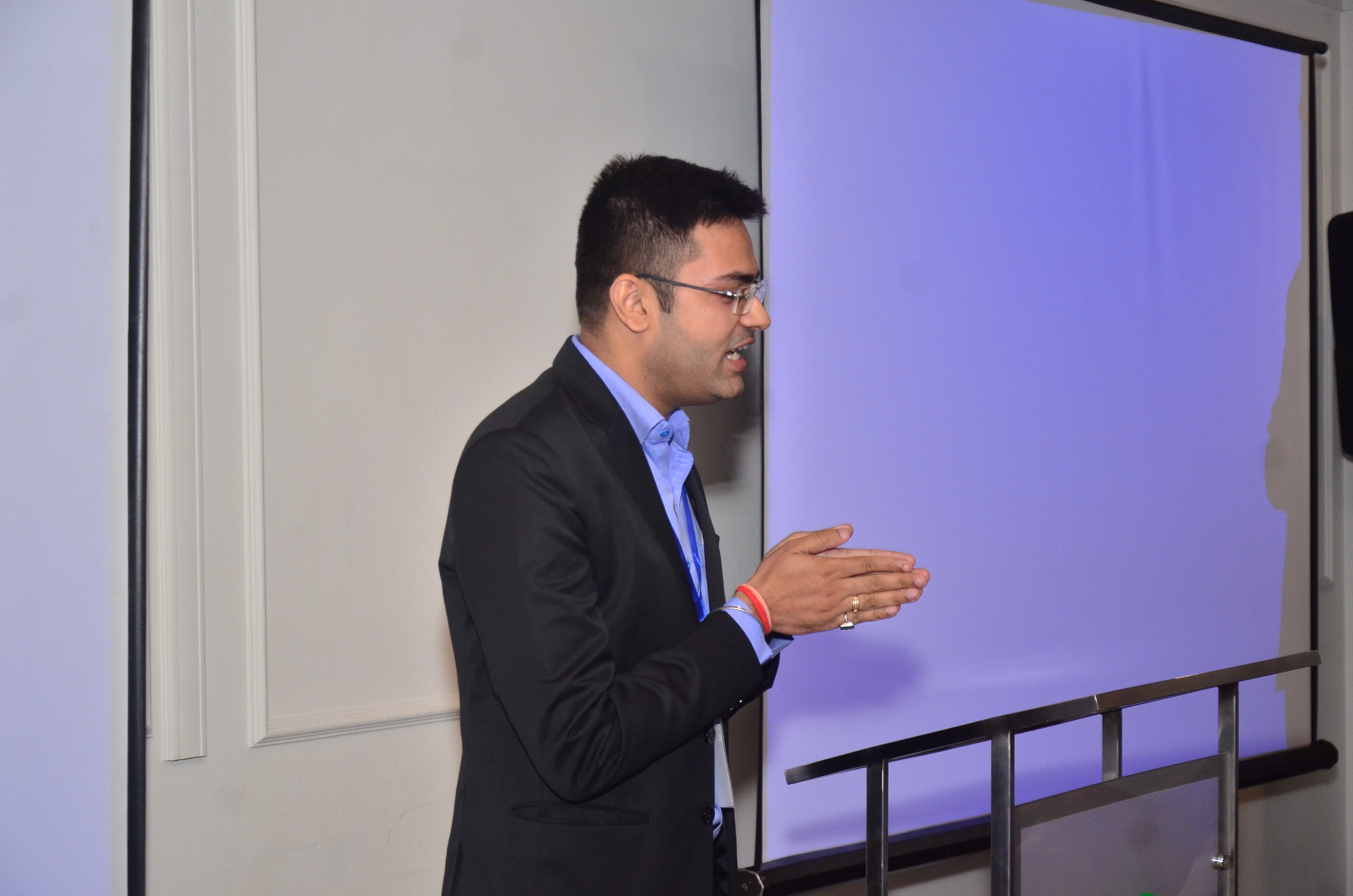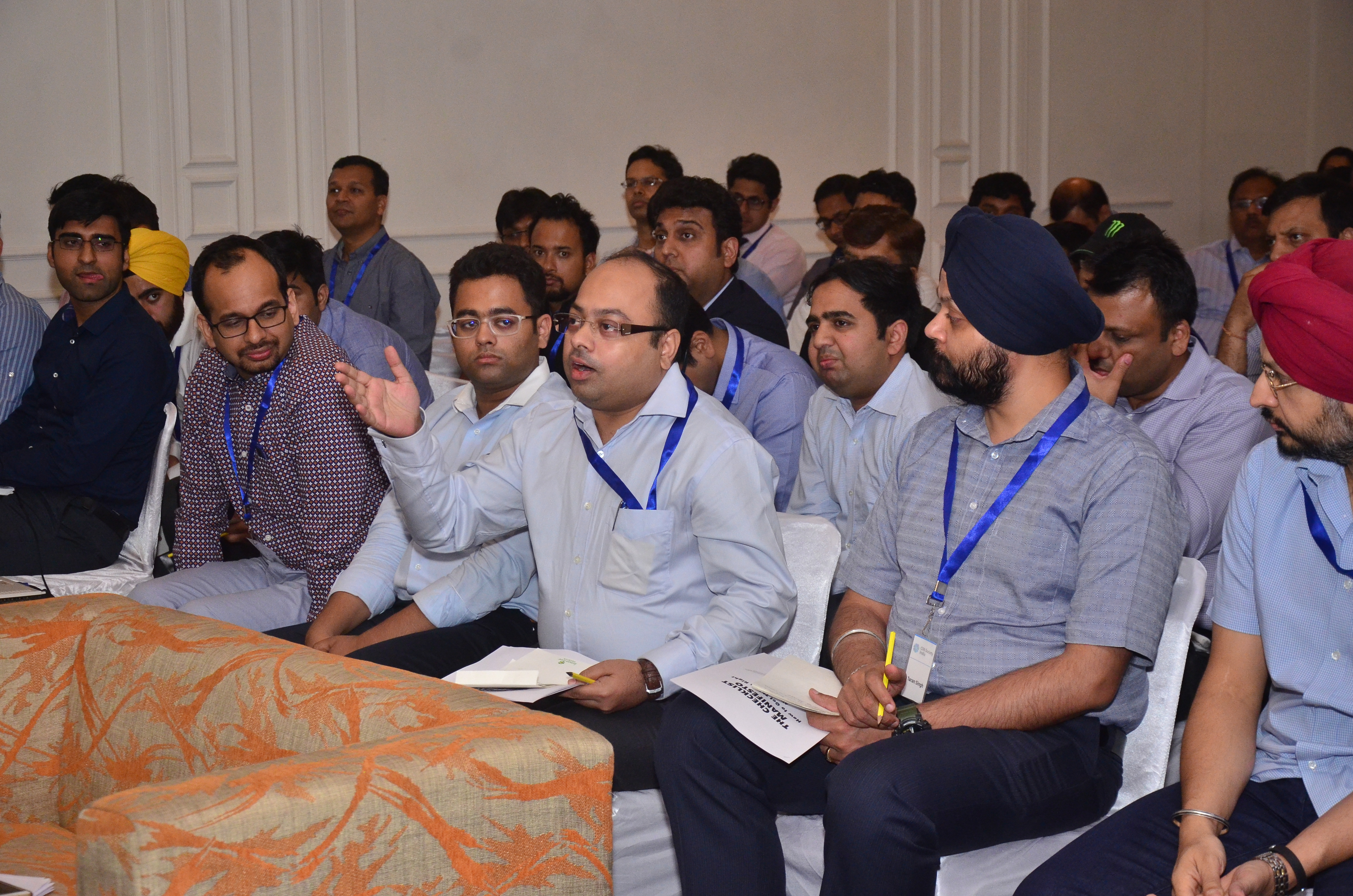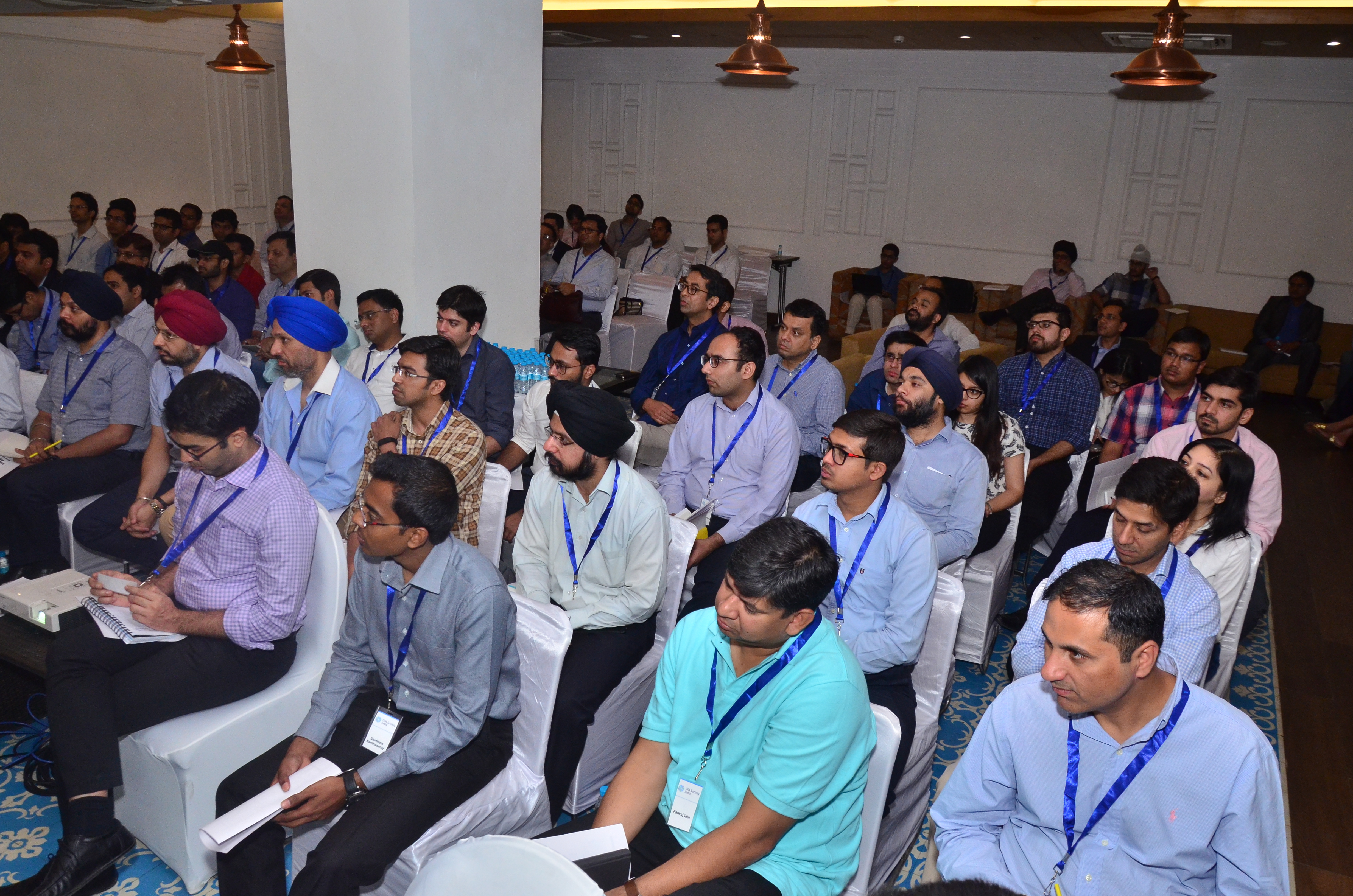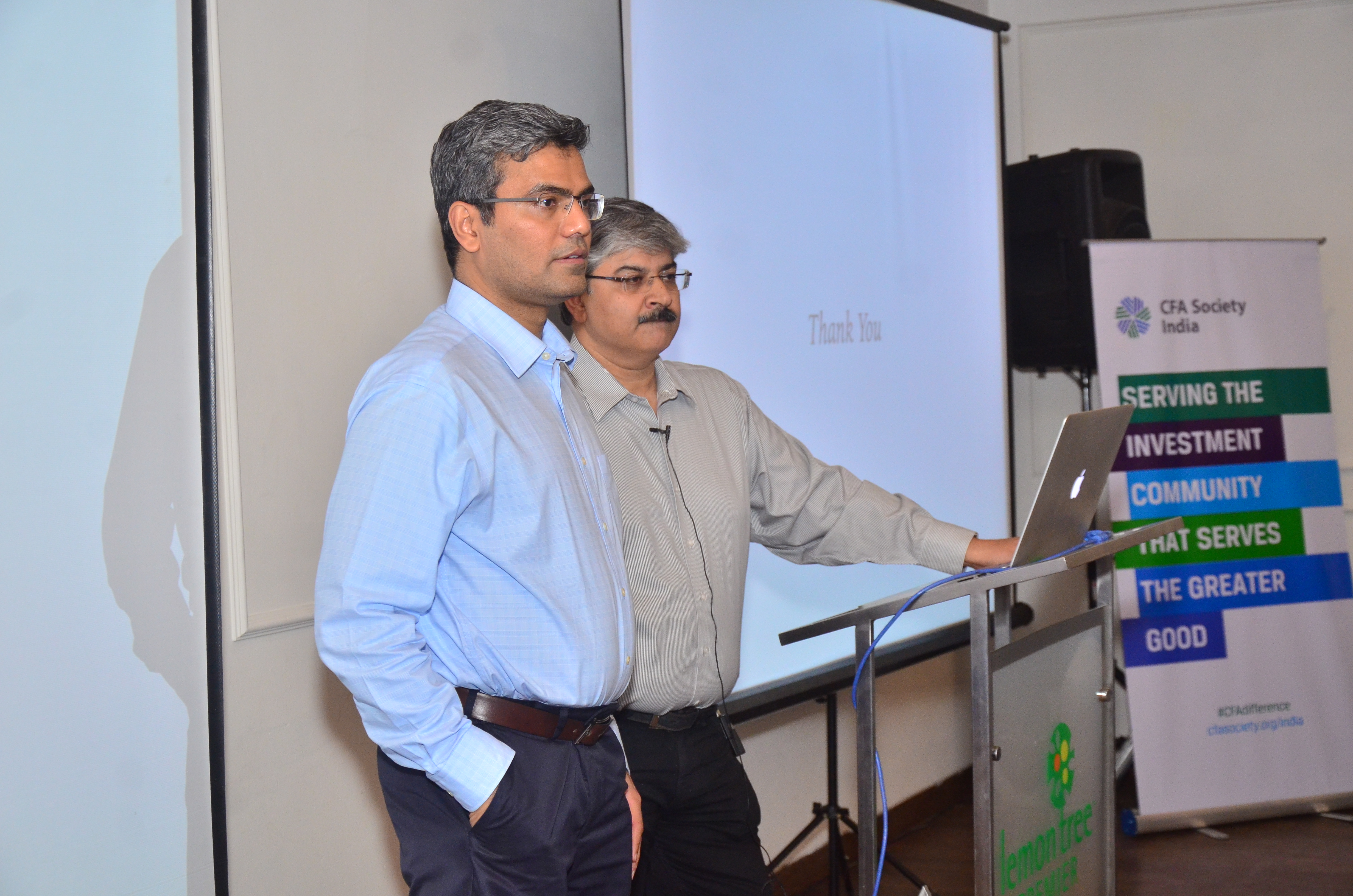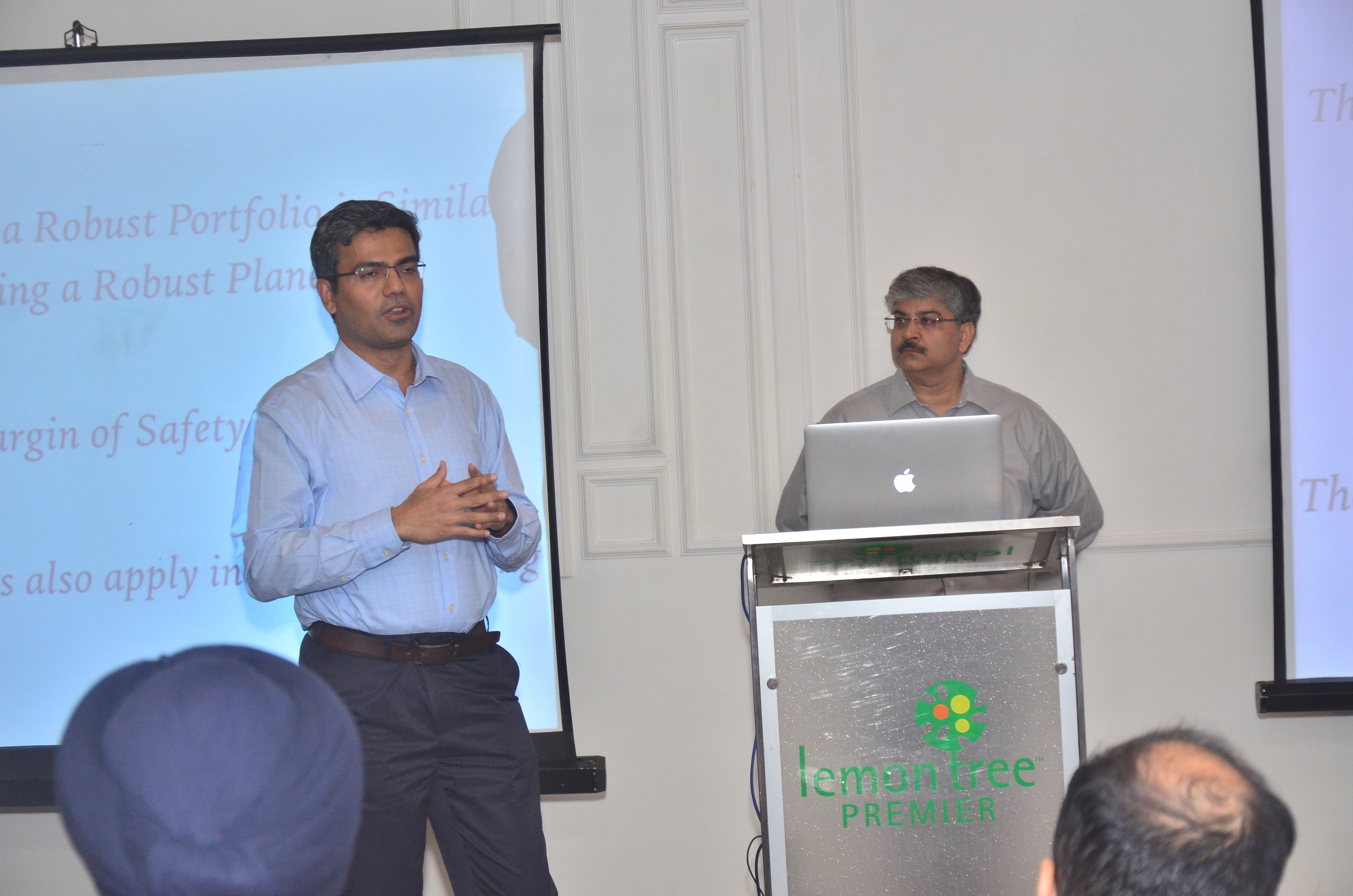- May 24, 2017
- Posted by:
- Category:BLOG, Events, New Delhi

Contributed by: Shivani Chopra, CFA
As the CFA Institute celebrates its 70th Anniversary this year, it remembers the seminal event that shaped the geographical reach of CFA Society network. Even today these events deliver value to the members by providing forums to learn and discuss issues of common interest. We witnessed another such event on 13th May 2017 when the Delhi Chapter of CFA Society India had the privilege of hosting Mr. Navneet Munot, CFA who delivered a very interesting talk on the current topic. An acknowledged expert on the topic, Navneet is the Chief Investment Officer of SBI Mutual Fund and Board of Director, Indian Association of Investment Professionals (IAIP).
The list of variables affecting equity markets is interwoven in a complex web and the list itself is pretty lengthy. Navneet tried to discuss most of these factors currently affecting Indian stock market. He started the discussion by highlighting the structural reforms happened in India recently. These include Bankruptcy code, GST code, Aadhar Bill, Real estate regulatory bill, etc. Demonetisation of high value currencies has significantly expanded the tax payer base by adding 94 lakh new income tax payers. As finance is becoming more digital, it is leading to Financialization of assets. The household savings are entering the financial sector more rapidly and for longer term now. The situation in India can be compared to 401K movement in US. A reform with a simple motive – “Save more to have a better retirement”.
Digitization, Technology, Urbanisation and Rural revival
Navneet then discussed the growth drivers for India. Some of the growth drivers are correctly priced while others are not. Digitization will be one of the most important growth drivers. Infact, India is leading the digitization drive in the world as its migrating from data poor to data rich country. Many government programs are being tracked on live basis. Another growth driver closely linked to digitization is technology. The best way to change our country’s ‘DNA’ is through use of technology. We have a great potential to become one of most literate countries in the world as today being able to use technology is equivalent to literacy. Technology will continue to do wonders for the corporates as well. Jio is a brilliant example. It used Aadhar card information to expand its subscriber base to such high levels. Banks are considering the downsizing of their existing branches and may not be opening new branches at all. A point that was repeatedly stressed was that we as a country are massively underinvesting in technology. We need to invest much more in technology if we want to see the right results. Urbanisation and Rural revival was the next factor talked over. The government focus is on digital connectivity, rural electrification, crop insurance, road connectivity, financial connectivity, etc.
Leverage, Global Economy and Exports
Navneet went on to share some facts relating to leverage, reliance on global economy and exports .India is one of the least leveraged countries. During the last business cycle in 2007, the analysts predicted a 10%+ growth for extended period but this expectation busted due to policy inactions. India story today is strengthened by the regulatory and policy measures taken. Borrowing costs have come down and there is easier availability of credit in the retail sector. The private capex cycle will take some time to improve but the government capex looks good. Affordable housing schemes are fast gaining popularity. These schemes depend on idle land bank, tax incentives, latent demand, lower rates and easier credit. Real Estate Regulatory Act (RERA) is going to change the industry for good. The speaker expects the volumes to go up in the next few years in contrast to the prices that had gone up in the last few years. He also spoke about the importance of global trade. Though it is perceived that India is a domestically driven economy, the truth is that global economy also matters a lot to us. The continued pick up in India’s exports is a healthy sign. India has never lost its market share even in tough times. Our country is least affected by global trade volatility because of a well-diversified basket. Growing exports coupled with robust FII and FDI flows have led to the appreciation of the rupee. After the demonetization, the excess liquidity in the banks kept RBI intervention low as absorbing excess dollars could have added even more to the rupee liquidity.
What Next ?
All the factors discussed above will have an important bearing on the Indian stock market. Things have just started to fall in the right place, be it liquidity or political stability. We have a reform oriented government and supply side economy is building up. Other than the twin balance sheet problem, macroeconomic situation is looking very bright. Taking clues from the past Sensex performance, there have been two set of periods when the market was down for two consecutive years (1995-96 and 2000-2001). After that we have not really seen any period and so logically the third year after two almost flat years should be good. Below are the contributors which will help sustain 30K level –
- Earnings Quality and controlled costs – Navneet’s biggest worry is the earnings sustainability. The NIFTY PAT is expected to post a double digit growth but it is coming from only a few select sectors like Banks, Oil and gas, etc. In this cycle, wages and other key costs will remain controlled. So in future when revenues will improve, this level of 30K will sustain
- Better leadership at state levels – We can see some major action happening in a few states. E.g. Uttar Pradesh (UP) which has historically been a drag can actually drive the growth agenda for India. A state with 16.5% of country’s population has ranked very poorly in terms of per capita income, literacy level, poverty ratio, etc. In terms of social conflict, UP can either be a biggest demographic dividend or demographic disaster.
- New set of winners- India might be heading towards NICE era – Non Inflationary Continued Expansion but with a new set of winners. As the rising tide doesn’t always lift all the boats, likewise not all the corporates will do well. A few may even go out of business. With the help of technology and emergence of social media platforms, costs like advertising are very low today. This will help companies with new business models thrive at a faster pace. Active stock picking remains the key.
- Liquidity- The biggest contributor is increase in liquidity. The retail participation is at all time high but the numbers are just a tip of the iceberg. Increased supply from IPOs, divestments and QIPs can absorb this liquidity. The need of the hour is to issue mega IPOs to revive the IPO market. Private PSUs have a good scope to go public as well.
There are risks to be considered too. Navneet mentioned a few important ones like geopolitical, GST implementation, twin balance sheet problem (over leveraged corporate balance sheet and NPAs in banking sector), disruptive forces faced the business, etc
The talk ended with attendees actively asking equity market related questions, all of which were answered very patiently by our eminent speaker, Mr Navneet Munot.
–SC


